It may not have been entirely evident at the time, but the seeds of change on big box office cinema had been sown by a superhero movie in 2008. If cinema goers had been told this at the time they would have assumed it was The Dark Knight, the epic Batman film that treated it’s source material with a maturity never before seen in a comic book movie and appeared an instant genre changer. However it was a less well known character from Marvel that kicked off a saga, with a web of offshoots that would build ten years later to the biggest movie of all time. If nothing else the film would play havoc with theatre staff who now had to wait until the end of the credits for people to leave, allowing them to clean up after them.
In any case I’m not going to talk about either of those movies (because I gotta save something for future projects for after I reach 2016, which will be the last of my year by year retrospectives), in fact there are a lot of great movies I could easily talk about from 2008.
2008 was a stacked year. Amongst the films I thought I’d be writing about at some point include Slumdog Millionaire, The Hurt Locker, In Bruges, Gran Torino, Valkyrie, Wall-E and the incredible Frost/Nixon. So my three choices (and one WTF moment) for this year may seem to some odd, but remember these aren’t what I consider the “Best” films, but the ones that for one reason or another resonated with me personally.
Cloverfield (director: Matt Reeves)

When a giant creature attacks New York city, a group of escapees attempt to reach a trapped friend before joining the evacuation.
In the Summer of 2017, movie goers waiting for the start of the first Michael Bay Transformers movie were in for quite the surprise. A baffling trailer, that started as camcorder footage of a swanky NY party, interrupted by a power cut and TV reports of earthquakes and finishing with panic as the city is rocked by a series of explosions and the eerie sight of the head of the severed head of the Statue of Liberty rolling down the street. Audiences gasped, but there was no title to feed their intrigue, only a release date of January 2008. That no one new what they had just seen was not surprising, as the whole project for the film Cloverfield had been kept in total secret by makers JJ Abrahams and Matt Reeves (even the cast were kept in the dark on what they had been signed up for).
Speculation was rife on the internet, not least because of the involvement of the Lost team which had already driven fans to obsessive levels of investigation of episodes for clues on the show’s many mysteries (I personally spent a lot of time reading the many novels seen being read by Sawyer, hoping I’d unlock what was going on on that island and those damn numbers). As info was slowly released the more dogged enthusiasts could follow a trail of fictional websites, that revealed confusing elements of the terrorist hijacking of an oil rig, sinister shenanigans by a Japanese corporation, a crashed satellite and a weird marketing campaign for a softdrink. Key characters spotted in the trailer were even found to have their own Myspace accounts.
Theories of this being a new Godzilla film, or a Lost spinoff proved unfounded (although there is a cheeky Hanso Foundation logo that appears on the films intro), as the title Cloverfield and the striking poster featuring a wrecked and beheaded Statue of Liberty appeared. But while it became clear we were dealing with a found footage film and a giant monster movie, the one thing we clearly were not going to see was the monster itself which remained absent from the subsequent trailers.
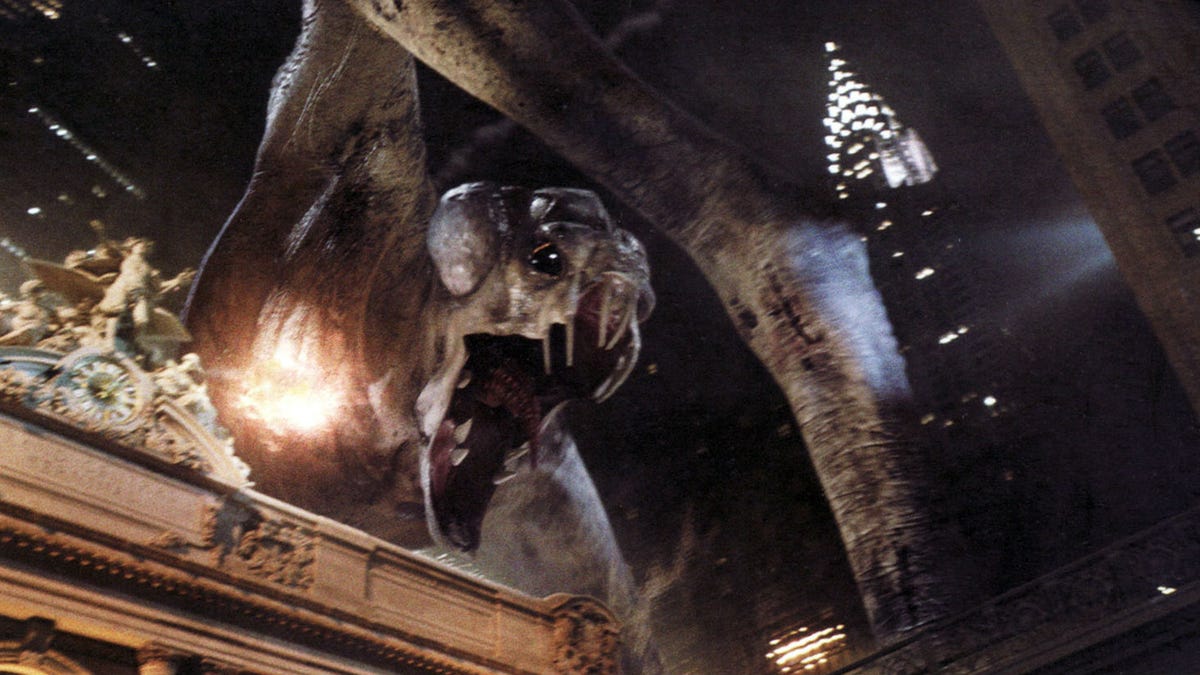
While the found footage fad had mainly spawned an excuse for movies on the cheap, Cloverfield brought a big budget to the genre and made full use of the concept as a creative way to drive the narrative. The footage in Cloverfield (which in the opening moments we see has become the property of a Government investigation into a incident called “Cloverfield”) is from a camcorder, recovered from Central Park that captures the incident of a devastating attack on New York by a giant creature. By using this method we see the whole drama unfold from the point of view of a group of friends, who are in the dark as to the full extent of the incident and we learn what’s going on as the situation is revealed to them. The vid starts at a farewell party in a swanky apartment, introducing us to the main characters (and creatively clever the fact the film is recorded over a previous tape means that occasionally we get flashbacks cut in when the tape is stopped to review footage), which is interrupted by what initially appears to be an Earthquake but soon escalates.
It’s the tension and build in Cloverfield that really sells this film as a great monster movie and we’re along for the ride as if we’re one of the survivors (in a way a surrogate experience through T.J Miller who is the one holding the camera and scared and freaked out like we would be) . We witness the carnage from a distance at first, but then plunged into the panic as we run, take cover, hide and are stunned by the aftermath of destruction.
This view from the ground level makes Cloverfield an intense ride, exhausting at times as we are caught up in exhilarating, chaotic firefights and terrifying chases through dark subway tunnels with the appearance of smaller, spider like creatures. All the while we get tantalising glimpses of the look of the creature, looking more fearsome as we’re generally looking up at it and remember as cinema goers we’d yet to see what the monster looked like.
Naturally the New York setting brought about comparisons to the events of 9/11, which some critics were uneasy about and were negative towards the film as a result feeling it exploited a real tragedy. Indeed, the dust coated streets, debris floating from smashed buildings and lines of stunned survivors can’t help but invoke those memories, which while uncomfortable at times does add a sense of realism that the scenes of say Independence Day lacks.
Where I especially like Cloverfield is that it brings a true sense of horror to the giant monster genre. The creature feels a real threat and though the rarity of the large scale epic scenes common in most monster movies makes it more effective when we do see it (the view from a helicopter towards the end of the film as Cloverfield is bombed is excellent). There is just as much terror brought by the spider creatures, especially in a scene where the survivors fall upon a army camp and the panic caused when they find one of them has been bitten is another sign that there is scary (especially when she is rushed behind a screen and it’s ambiguous whether the blood we see is because something has exploded out of her or that she has been shot dead). There are also spooky moments such as an abandoned horse and carriage on a deserted street and the pack of rats escaping through the tunnels.
Speculation has always existed for a Cloverfield 2 (some have remarked that another civilian with a camera on the doomed Brooklyn Bridge was hints of another movie from a different perspective was a possibility), however the abundance of monster movies since has put Abrahams off the idea. Instead a film entitled 10 Cloverfield Lane was released, although excellent bore little in relation storywise to the original. Much less satisfying was the dumped on Netflix Cloverfield Paradox, which was shoe horned into the Cloverfield mythology with more overt ties to the attack on New York.
Cloverfield is a short blast of fun, and for the interested there is a lot of backstory to discover on the internet and dvd extras.
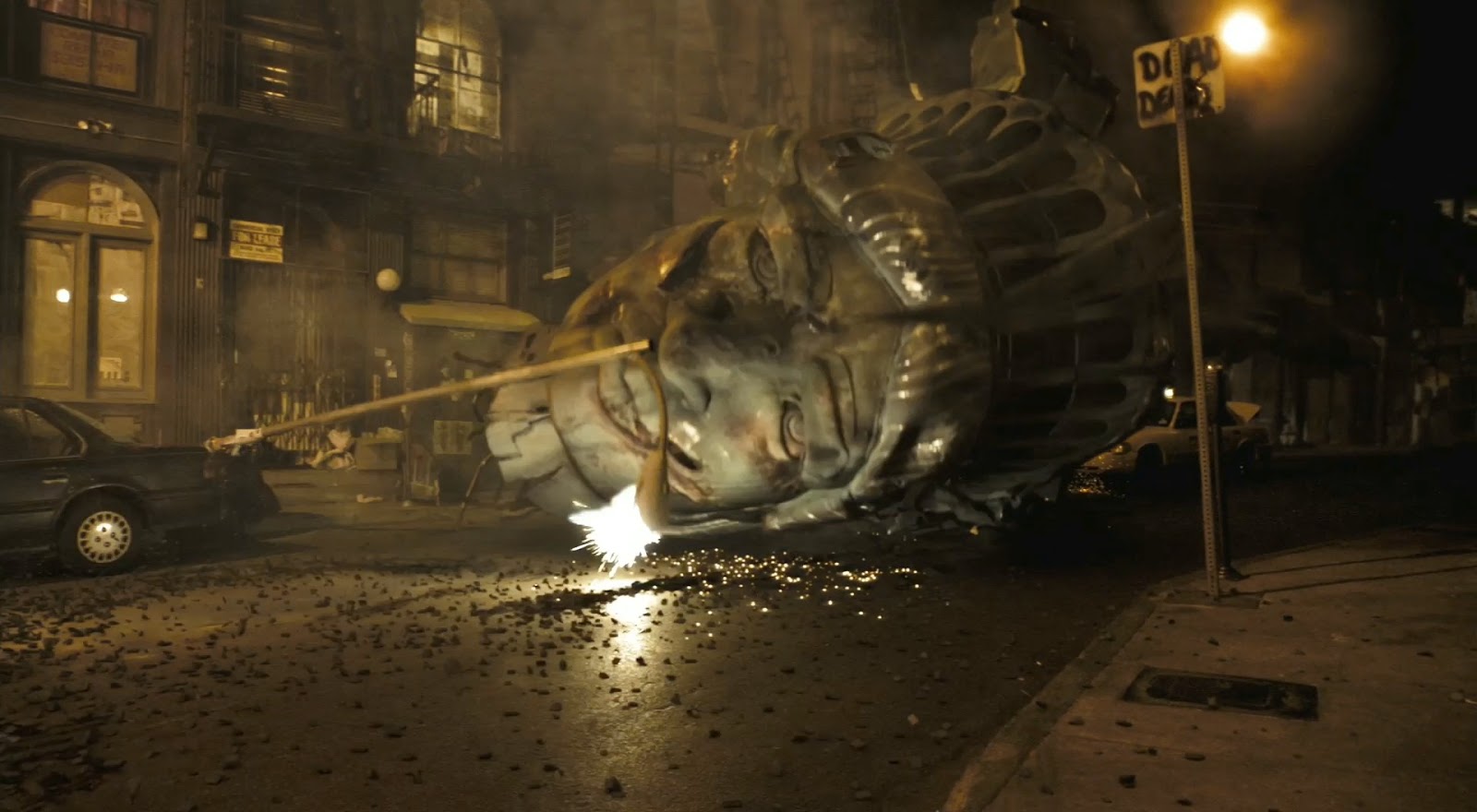
Mama Mia! (director: Phyllida Lloyd)
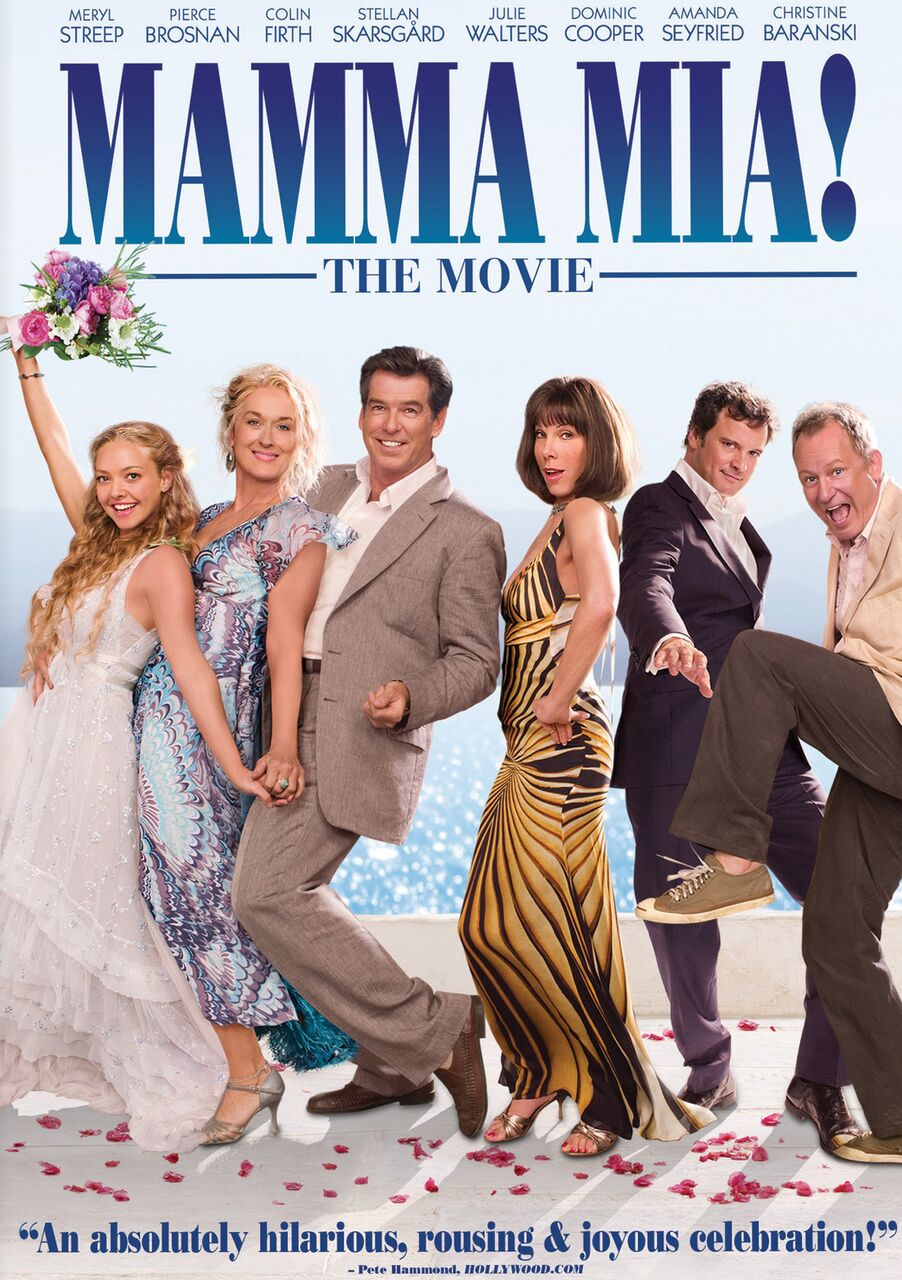
A young woman invites three men to her wedding, hoping to figure out which one is her father. Her mum has no clue either as she shagged all three within a week of each other.
Fuck “man points”, can’t spend em anyway.
If I remember correctly, I didn’t feel a great urge to go to see Mama Mia. Not that I had anything against Abba, who’s songs I always found catchy and pleasant enough to listen to. It just wasn’t something I felt the need to go out and see. However a rare event occurred when my mum expressed an interest to actually go to a cinema and see it and like a good son I obliged to take her and suffer through it for her. I went again two days later.
Mama Mia is one of those movies that is so easy to scoff and roll the eyes at. Certainly the critics had a field day ripping in to it, calling it utterly sentimental, contrived for how it forces the story around a greatest hits collection of ABBA and criticising the amateur singing of the cast. All of these criticisms are completely right and correct, but funnily enough even with all these points I enjoyed the hell out of Mama Mia and both times left the theatre with a beaming smile and an urge to skip and run down the streets waving my arms in the air singing Dancing Queen.
Like the stage play it’s based on Mama Mia heavily lifts the story of the 1968 film “Buona Sera, Mrs Campbell,” with Meryl Streep as a woman who is unaware which of her three old flames is the father of her daughter. This leads to a comedy farce when her daughter unbeknown to her invites all three to her wedding to figure out which one is her father and to walk her down the aisle. From there it’s all contrived plot points and introspective as an excuse to trigger a rendition of an Abba song.
And yet for all the silliness and corniness and straining to make the songs fit into what’s going on, it totally works for me.
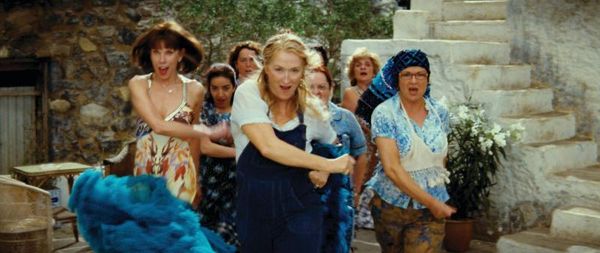
The sheer joy that I feel watching everyone dropping what they are doing to join a parade through the Greek landscape, throwing everything into Dancing Queen, is something I can’t describe or frankly justify with any sense of reason. I just find this and all the other songs throughout the film infectiously full of joy.
Abba songs are a favourite of drunken karaoke nights and that it was Mama Mia unashamedly comes across as. What really works for me is the cast appear to be having a blast (they are actors though so there is every chance they’re faking it) even though the singing is hardly top rate. Pierce Brosnan bless him can’t carry a fucking note, but it’s perversely entertaining watching him giving it everything when singing SOS anyway. Flat as a fart he may be. Meryl Streep on the other hand the is trying to raise the gravitas of the lyrics of Winner Takes it All to almost operatic tragedy levels, with the amount of heart and emotion she’s putting into her delivery.
Streep is almost upstaged though by the brilliant, mad auntie vibe brought by British treasure Julie Walters. Walters is just splendidly hyper and hilarious, especially while singing “Take a Chance on Me,” while chasing after Stellan Skarsgard.
If there is such a thing as “guilty pleasures,” Mama Mia is mine, one that I’d plead guilty for and throw myself at the mercy of what ever punishment the jury would deem fitting. From the undeniable urge to sing along with Super Trooper at Sophie’s hen party, to the heartwarming mother daughter moment in the rendition of the lesser known “Slipping through my fingers,” to the hilarious finale where the cast adopt Abba 70’s style costumes to perform Dancing Queen and Waterloo, Mama Mia puts a big old smile on face.

The Wrestler (director: Darren Aronofsky)
A professional wrestler struggles with real life as he comes to the end of his career.

For my sins I am a wrestling fan. So it stood to reason that when I read in the Wrestling Observer that a proper wrestling film was in the works with Nicholas Cage and director Darren Aronofsky it automatically became my most anticipated movie of 2008. Cage soon bailed, apparently after attending an independent wrestling show (ROH for all you wrestling nerds out there) and seeing the sort of shape he’d be having to get into. Instead in an poetic example of life mirroring art, Mickey Rouke (who Aronofsky claims was always his preferred choice) got the role.
Rouke fitted the role perfectly, not least because with his career having fallen far from his glory days (he had turned heads with his performance in Sin City a few years previous), there was a poignancy to him filling the shell of the broken down Randy “The Ram.” Like Rouke at the time, Randy’s star has fallen. Once a major star in front of massive crowds he’s wearing his body out performing on small shows, for tiny payoffs and having to work in a supermarket to barely make the rent on his trailer.
For hardcore wrestling fans this was a dream film, one that took the realities of wrestling business seriously. There are lots of scenes filmed backstage at a variety of real shows, mostly improvised which sees Randy interacting with real wrestlers (a scene where a younger wrestler goes over his plans for his match with Randy is a perfect representation of wrestling etiquette on how a wrestling veteran is expected to be respected). That and the wrestling all feels dirtily authentic, the realities of performing on the lower leagues.

As pleasing as it may be to wrestling fans, The Wrestler at it’s heart isn’t simply a film about life in the squared circle. There is a very human drama at play, about a man who is unable to let go on the one thing that he was good at, the one thing that made him special, because he simply has nothing else to fall back on. A pivotal moment in the film where Randy eyes the sorry existence of other former wrestlers at a sad display of a convention, urges Randy to try to get his regular life together.
He attempts to reconnect with his daughter and to embrace his regular job (with one of the more hopeful moments in the film he uses his charisma and showmanship to interact with the supermarket customers). However Randy’s self destructive screw up nature means he blows his chances with his daughter and an altercation with a customer causes him to rampage and lose his job.
Throughout the film there are references to a classic match he had with a wrestler called the Ayatollah, which is the symbolic pinnacle of his stardom. When he’s awarded the opportunity to have that match again (albeit on a small stage), it’s the one thing he can’t turn down when he’s told that continuing to wrestle could kill him. In a uplifting but tragically sad moment, Randy gets to relive the biggest moment in his life, knowing he may lose his life as a consequence.
Rouke’s Oscar nominated performance is powerful and heartbreaking (the final moments as he embraces the warmth and love of the crowd even as it’s clear he’s dying is stunning), but supporting him is Marisa Tomei (who earned a cascade of nominations) the stripper Cassidy who Randy regularly visits. Cassidy is a performer in many similar ways to Randy, both using their bodies as spectacle for an audience to build a connection that pays for their alter egoes, but don’t know or care little for the person behind that. Cassidy is the one person who ultimately cares about Randy and tries to get him to call off his final match. The “love” and respect of the roaring fans is sadly the only thing that makes him happy.
When I watch Rouke’s performance I can see the lives of many wrestlers at least on some level. Even amongst wrestlers who haven’t fallen to the depths of “The Ram,” there is an allure of the ring that draws many of them to keep performing, even at the expense of their bodies in later life (there is an alarming mortality rate amongst wrestlers for a variety of causes, Bruiser Brody who was murdered himself by another wrestler described wrestling as a business that eats it’s young). Maybe because of seeing themselves in the characters, this many wrestlers were very positive on Rouke’s portrayal. Although wrestler Lance Storm pointed out the absence of positive well adjusted characters who had a good family life like himself, stating that Randy encountering such a person would have added a degree of pathos to his own life.
The Wrestler is a stunning movie, and a surprise that I never would have believed a serious and critically celebrated movie on the subject could ever have existed.
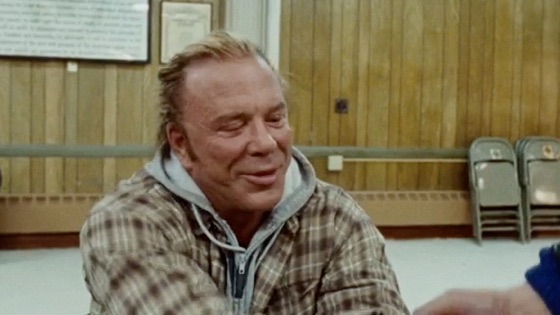
WTF? Indiana Jones, Leave my memories alone
Let’s face it Indiana Jones four should never have happened. There is a lot to hate in the movie. An over the hill Harrison Ford, CGI monkeys, flying saucers, fridges been able to withstand a nuclear blast. this film was just bloody horrible to sit through.
But one travesty for me stood above all others. A decision that is indicative of something that is wrong with the unsubtle fan service that is intent on lobbing easter eggs at us every chance it gets.
Remember back in Raiders of the Lost Ark back in 1981, that awesome ending where the Ark is boxed up by sinister individuals unknown. As that spooky but majestic music airs we see the crate being taken deep into the depths of a mysterious location, filled with seemingly miles of other crates containing who knows what?
I mean, what an ending. Full of mystery, intrigue about where this warehouse was, what was in the other crates and what was the ultimate fate of the Ark going to be? And what made it even cooler was we deep down knew we were never going to find out, because that story was done.
Of course there were theories, they always are. And fans generally began to settle upon the idea that the warehouse in question was area 51 and that the ark was taking it’s place next to alien bodies, Nazi Scientists, fake moon landing sets and the Snyder cut of the Justice League film.
It made sense, but we didn’t really need to know for sure, it was tantalisingly fun to speculate and left us with a satisfying sense of mystery.

Well that’s until 2008 and this piece of shit movie came out. Because films had now moved away from the days of subtle little easter eggs that made you wonder. Now we were in the era of “Everything has to be explained,” and placed on a big plate in plain sight because we know we’re gonna make you fans cheer by God.
So yes the film starts in Area 51, and wouldn’t you bloody know it right there filling the entire screen we see the Ark, sticking out of a broken crate with all the majesty of an Ikea Billy unit that’s spilled out from it’s box. They even play a few bars of the Ark’s theme, just to drive the point home and yell at the screen, “look, look, it’s the thing you liked from the first film, you know when these films were good!”
So there you go, satisfying mystery over. The Ark was in Area 51 which has had all the magic torn away now we’ve seen it’s really just a warehouse.
Happy now?

That said, I’d really like to know what’s in the case in Pulp Fiction
Til next time
Dazza







